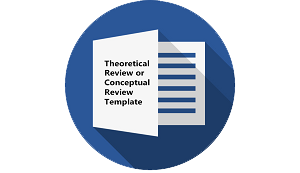English Online Learning in the Age of Global Pandemic: How Do Teachers and Students Feel?
DOI:
https://doi.org/10.30957/lingua.v18i1.682Keywords:
Online Learning, Teaching English, Learning ExperienceAbstract
Numerous researchers examine teachers' and students’ experiences in online learning at the college level. But there are a few sources that explore the implementation of English online classes at a Vocational high level. This issue is highly needed since the theory and researches dealing with this topic at this level still rare. The present study aims to close the gap by investigating the implementation of English online classes. The participants were six female English teachers and one hundred and seventy students at one state vocational high school in Central Java, Indonesia. The current research analyzes not only numerical data but also narrative data, which is customary for qualitative research to address the research questions. The instruments use questionnaires and a semi-structured interview. The overall results revealed that technology could help both teachers and students in conducting teaching and learning activities, even though some constraints such as limited data plan, network difficulties, and lack of teacher-students engagement. Furthermore, understanding materials became top rank challenged for participants during the online class. The current study contributes theoretical and practical benefits to improve the implementation of online learning in the age of global pandemics.
Downloads
References
Chikamma, Michael & Nwaudu, U. (2018). Language Teaching and Technology. Journal of Languages and Literatures (JOLL), 3(2), 190–198. https://doi.org/10.1017/CBO9781107415324.004
Dennett, S. K., & Vásquez-Colina, M. D. (2012). Teaching with Technology: Reaching Out in the Digital Age. International Journal of Adult Vocational Education and Technology (IJAVET), 3(2), 47-53. doi:10.4018/javet.2012040105
Fansury, Januarty & Rahman. (2020). Digital Content for Millenial Generations: Teaching the English Foreign Language Learner on Covid-19 Pandemic. Journal of Southwest Jiatong University, 55 (3), 1-12. doi:10.35741/issn.0285-2724.55.3.40
Gao, L. X., & Zhang, L. J. (2020). Teacher Learning in Difficult Times: Examining Foreign Language Teachers' Cognitions about Online Teaching to Tide Over COVID-19. Original Research, 11, 1-14
Harding, J. (2018). Qualitative data analysis: From start to finish. SAGE Publications Limited.
Hockly, N. (2015). Developments in online language learning. ELT Journal, 69(3), 308–313.
Jabeen, S. S., & Thomas, A. J. (2015). Effectiveness of online language learning. Lecture Notes in Engineering and Computer Science, 2219(October 2015), 297–301.
Lucena, J. M. V. M., & Leal, D. A. (2020). Education, Teaching and Technology and the Amazonian Identities. Revista de Estudos e Pesquisas Sobre Ensino Tecnológico (EDUCITEC), June, e131820.
Malathy. (2019). Teaching Language Through Technology. Kongunadu Research Journal, 1, 4–5. https://doi.org/10.26524/krj28.
Malinowski, D. (2016). Teaching Languages Online. CALICO Journal, 34(2017), 259–262. https://doi.org/10.1558/cj.31241
Marlina, R. (2018). Teaching language skills. In Teaching Language Skills (Issue February 2018, pp. 1–14). https://doi.org/10.4324/9781315230801-6
MihelaÄ, L. (2017). Teaching languages with apps. April 2017, 51–56.
Nawab, A. (2012). Is it the way to teach language the way we teach language? English language teaching in rural Pakistan. Academic Research International, 2(2), 696–705.
Nugroho, A., & Rekha, A. (2020). Speech Acts of Requests: A Case of Indonesian EFL Learners. Journal of English Language Teaching and Linguistics, 5(1), 1–16.
Nugroho, A., Zamzami, M. R. A., & Ukhrowiyah, N. F. (2020). Language input, learning environment, and motivation of a successful EFL learner. Journal on English as a Foreign Language, 10(1), 46–69. https://doi.org/10.23971/jefl.v10i1.1511
Rahayu, F.S., Budiyanto, D., & Palyama,D. (2017). Analisis Penerimaan E-Learning Menggunakan Technology Acceptance Model (Tam) (Studi Kasus: Universitas Atma Jaya Yogyakarta). Jurnal Terapan Teknologi Informasi, 1 (2), 87-98. https://doi.org/10.21460/jutei.2017.12.20
Ross, M. (2015). Teaching and technology. Clinical Teacher, 12(6), 365–366. https://doi.org/10.1111/tct.12478
Rasmitadila., Aliyah, R.R., Rachmatullah, R., Samsudin, A., Syaodih, E., Nurtanto, M., Tambunan. A.R.A. (2020). The Perceptions of Primary School Teachers of Online Learning During the COVID-19 Pandemic Period: A Case Study in Indonesia. Journal of Ethnic and Cultural Studies, 7 (2), 90-109. http://dx.doi.org/10.29333/ejecs/388
Selwyn, N. (2009). Faceworking: Exploring students’ education-related use of Facebook. Learning, Media and Technology, 34(2), 157–174. https://doi.org/10.1080/17439880902923622
Shing, S., & Yuan, B. (2016). Apps Developed by Academics. Journal of Education and Practice, 7(33), 1–9. https://eric.ed.gov/?q=%22Mobile+apps+development%22&id=EJ1122634
Sholeh, M. (2020). Website: soloclcs.org ; 17(2), 123–133. https://doi.org/10.30957/lingua.v17i2.641.above
Skrandies, P. (2015). Teaching languages and the internet. February, 702–708.
Sun, X., Zou, J., Li, L., & Luo, M. (2020). A blockchain-based online language learning system. Telecommunication Systems. https://doi.org/10.1007/s11235-020-00699-1
Thadphoothon, J. (2020). Special Report Online Language Learning Survey. April. https://doi.org/10.4018/978-1-5225-9304-1.ch009
Wang, V. X., Russo, M. R., & Dennett, S. (2013). Electronic Education and Lifelong Learning. International Journal of Adult Vocational Education and Technology, 4(1), 46–60. https://doi.org/10.4018/javet.2013010104
White, C. (2004). Independent language learning in distance education: Current issues. 2003.
Wibowo, A. I., & Khairunas, S. (2020). Student’s Perception of Online Learning for Public Speaking Course. LINGUA : Jurnal Bahasa, Sastra, Dan Pengajarannya, 17(2), 111–122. https://doi.org/10.30957/lingua.v17i2.640
Yin, R. K. (2015). Qualitative research from start to finish. Guilford publications.
Downloads
Published
How to Cite
Issue
Section
License
Authors who publish with this journal agree to the following terms:
- Authors retain copyright and grant the journal right of first publication with the work simultaneously licensed under a Creative Commons Attribution-ShareAlike 4.0 International License that allows others to share the work with an acknowledgement of the work's authorship and initial publication in this journal.
- Authors are able to enter into separate, additional contractual arrangements for the non-exclusive distribution of the journal's published version of the work (e.g., post it to an institutional repository or publish it in a book), with an acknowledgement of its initial publication in this journal.
- Authors are permitted and encouraged to post their work online (e.g., in institutional repositories or on their website) prior to and during the submission process, as it can lead to productive exchanges, as well as earlier and greater citation of published work (See The Effect of Open Access).















